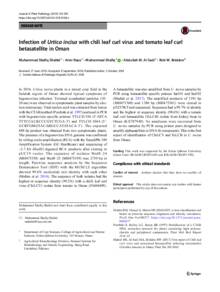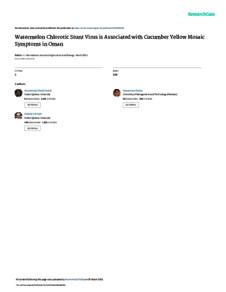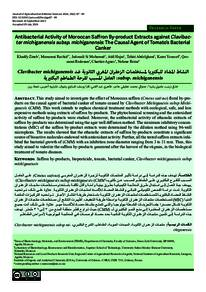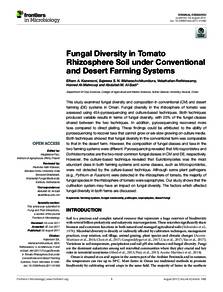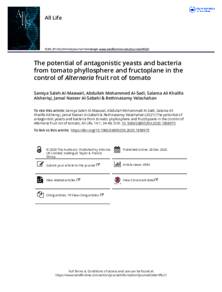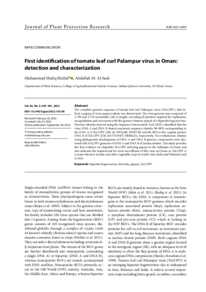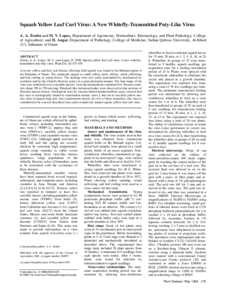Document
Infection of urtica incisa with chili leaf curl virus and tomato leaf curl betasatellite in Oman.
Identifier
DOI: 10.1007/s42161-018-0168-x
Source
Journal of Plant Pathology. v. 101, 2, p. 395
Contributors
Country
Germany.
Publisher
Springer.
Gregorian
2019-05-01
Language
English
English abstract
In 2016, Urtica incisa plants in a mixed crop field in the Salalah region of Oman showed typical symptoms of begomovirus infection. Twinned icosahedral particles (18–20 nm) were observed in symptomatic plant samples by electron microscopy. Total nucleic acid was extracted from leaves with the CTAB method (Porebski et al. 1997) and used in PCR with begomovirus specific primers TYLCD-356 (5′-ATCATTTCCACKCCCGYCTCGA-3′) and TYLCD-1044 (5′-GCRTGMGTACABGCCATATACA-3′). The expected 688 bp product was obtained from two symptomatic plants. The presence of a begomovirus DNA genome was confirmed by rolling-circle amplification (RCA) with the TempliPhi 100 Amplification System (GE Healthcare) and sequencing of ~2.7 kb HindIII-digested RCA products after cloning in pUC19 vector. The sequence of isolates Wed8–24 (MH475358) and Wed8–25 (MH475359) was 2759 bp in length. Pairwise sequence analysis by the Sequence Demarcation Tool (SDT) with the MUSCLE algorithm showed 99.6% nucleotide (nt) identity with each other (Muhire et al. 2014). The sequence of both isolates had the highest nt sequence identity (99.2%) with a chilli leaf curl virus (ChiLCV) isolate from tomato in Oman (JN604495). A betasatellite was also amplified from U. incisa samples by PCR using betasatellite specific primers Sat101 and Sat102 (Shahid et al. 2017). The amplified products of 1391 bp (MH475360) and 1386 bp (MH475361) were cloned in pTZ57R/T and sequenced. Sequences had a 99.7% nt identity and the highest nt sequence identity (98.6%) with a tomato leaf curl betasatellite (ToLCB) isolate from kidney bean in Oman (KX787940). No amplicons were recovered from U. incisa samples by PCR using primer pairs designed to amplify alphasatellites or DNA-B components. This is the first report of identification of ChiLCV and ToLCB in U. incisa from Oman.
ISSN
1125-4653
Category
Journal articles

